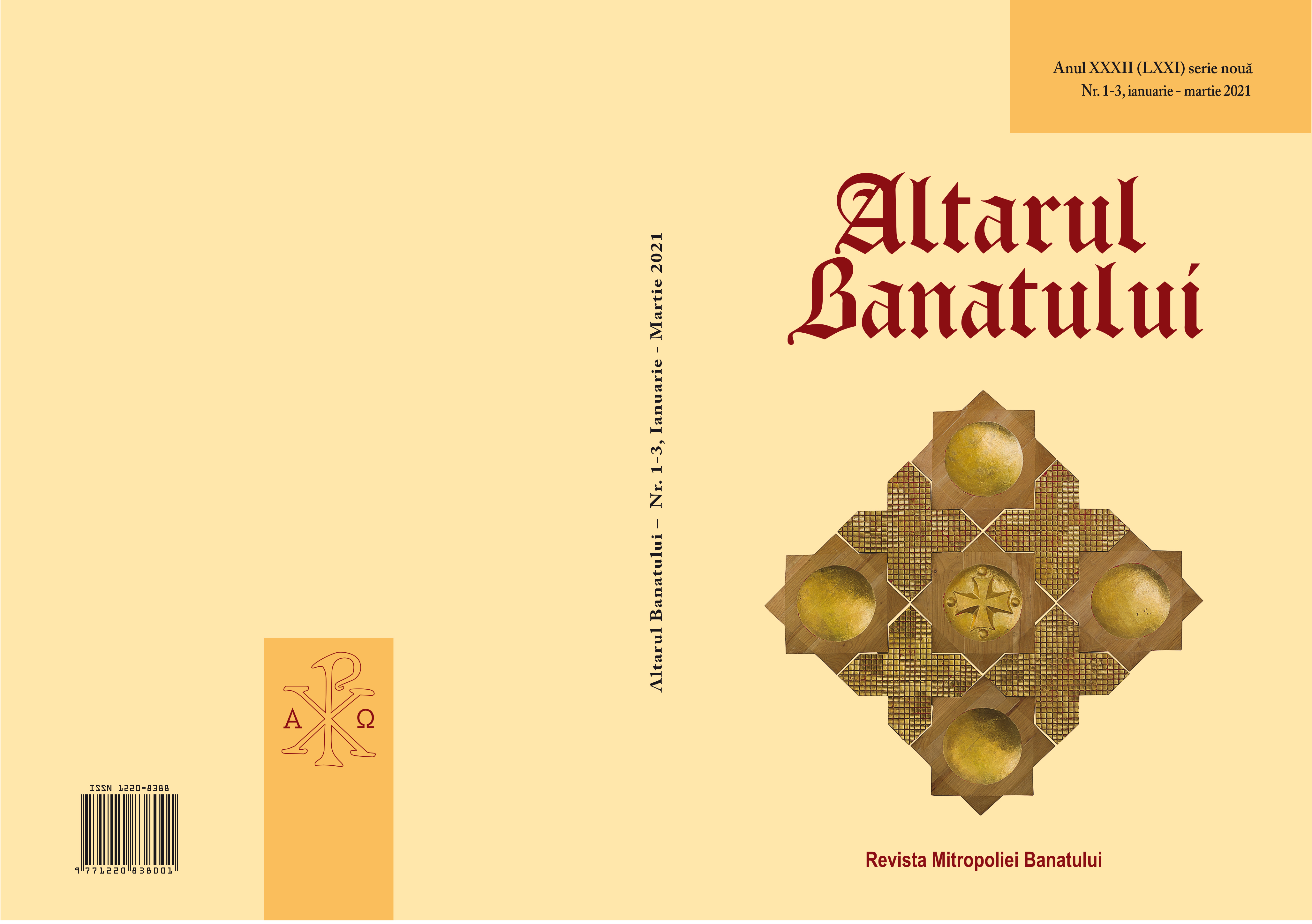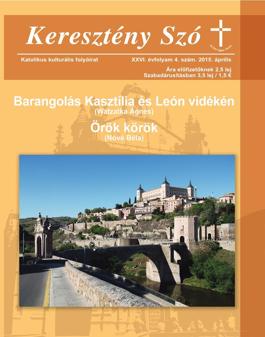
We kindly inform you that, as long as the subject affiliation of our 300.000+ articles is in progress, you might get unsufficient or no results on your third level or second level search. In this case, please broaden your search criteria.

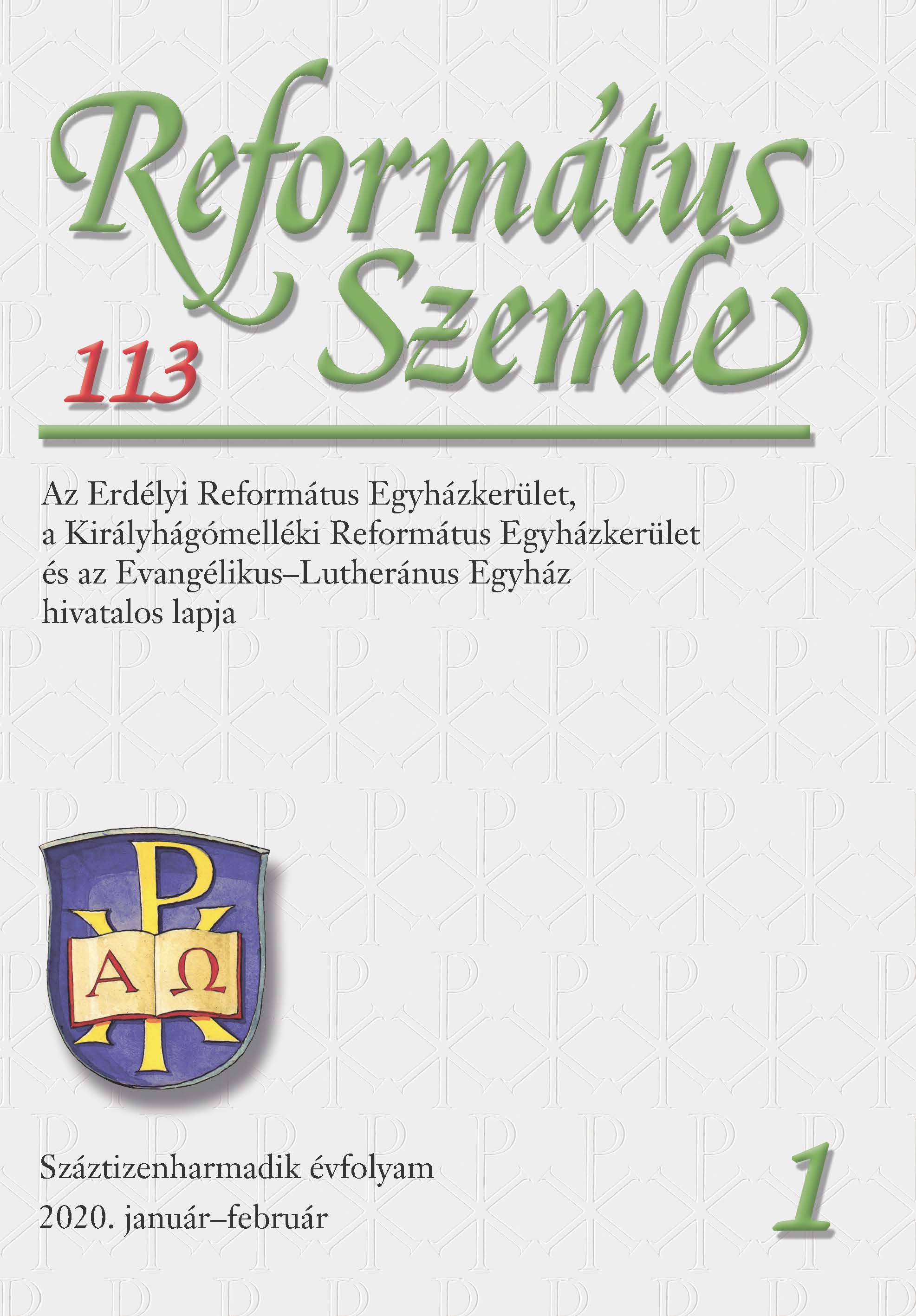
When speaking of Reformation and Humanism, we tend to connect them to each other. But as we come closer to the essence of each, we discover their substantially different nature. The gist of Humanism is the human nature. On statues and paintings of the Renaissance the man is portrayed as a great, powerful, almost almighty person. On the other hand, Reformation places God, Christ, salvation, reconciliation etc. at the centre of its teaching. Humans are included too, but only as sideliners, as weak, infirm, needy, helpless figures. Nevertheless, Reformation has benefited to a significant extent from Humanism via its emphasis on the grammar for mastering the languages of the Scripture (Hebrew and Greek), dialectics striving to a better understanding of the scriptural message, and rhetorics as a substantial technical help spreading the Gospel. Therefore, teaching these disciplines at the universities of the Reformation has become of major importance during the 16th century.
More...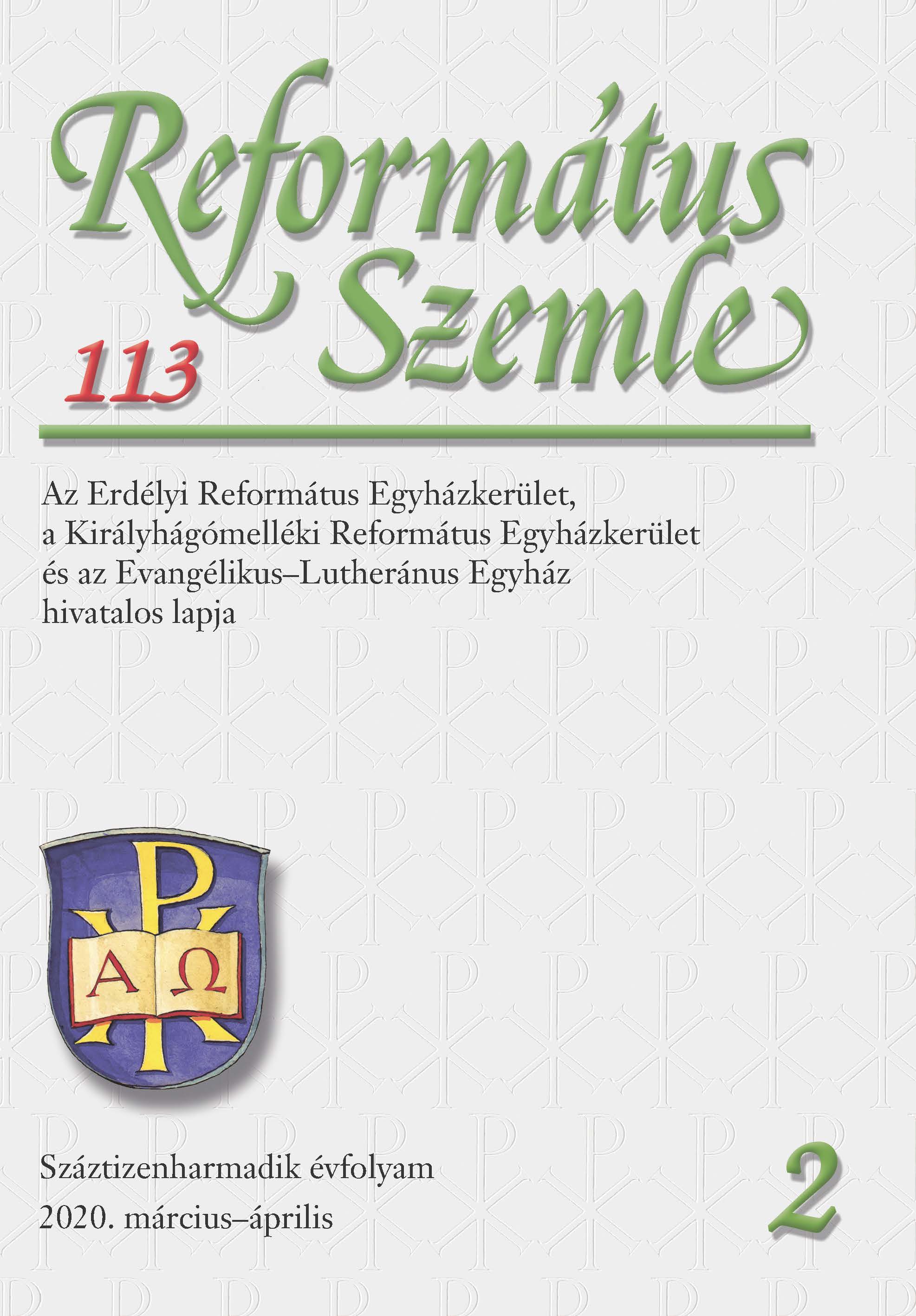
In his well-known metaphor, the Book of Hosea describes the relation between YHWH and the people of Israel through the marriage imagery. Contemporary scholarship treats this metaphor in different ways. The diverging interpretations derive, on the one hand, from the dissimilar understandings of the cultic circumstances of Hosea’s age, involve high uncertainty. Moreover, the text of Hosea is regarded as one of the most challenging compositions in the Hebrew Bible. Finally, from a redaction-historical point of view Hosea is again a very complex book that needs careful approach. The most debated question concerning Hosea and the fertility cult seems to be the existence or absence of an institution of sacred prostitution within the ancient world. A decisive conclusion in this regard is impossible at the moment. While recent studies tend to question the existence of this practice, our analysis allows interpreting Hos 4,14 as a description of a sacred prostitute. The proposal that this woman, termed הָ שֵׁ דְ ק ,should be regarded as person having a devoted cultic role, is worth considering. Nonetheless, based on the meagre amount of data at our disposal, this study argues that her sexual activity did not stem from this role itself, but from her loose morals and willingness of attracting partners. Within the necessary limits of a case study, the resources and texts reviewed by us hig.
More...
Jesus’ speech is not mere utopia but an acting force. It is this basic recognition along which the authoritative contemporary thinker interprets the parables of the Gospel. The interpretation faithfully reproduces the text, being original at the same time. In the view of this author, intellect instilled in our hearts, the unavoidable commitment, acting according to hearing, and breaking down ideological thinking reconquers for us precisely that inner space “which is essential to find our homes outside this world.” (S. Béla Visky, translator). Andrei Pleşu refuses to subordinate the parables of Jesus to philosophy, to any of the newer methodologies, or to contemporary political-ideological attitudes. Unlike many former and current church leaders, he seeks to be a follower of the Master by turning against the temptation of ideology (including those haunting intellectuals today) and attempting to stay away from all institutional “sedentarism” (including the academic one). (István Berszán)
More...
The Reformation highly esteemed the classical scientific disciplines as far as they contributed to a better understanding of the gospel. The method was delivered by the Humanism and Renaissance. Consequently, the reformers, whose primary concern was studying the word of God in original (Hebrew and Greek), started to master both languages right from the beginning. Hebrew helped them to learn and understand God’s will in the Old Testament in its original setting, while Greek improved their grip on the message of the New Testament. When preparations for ministry had started in the Protestant universities, both languages were self-evidently taken over in the educational process. The present paper deals with Melanchthon’s appreciation of the Greek language.
More...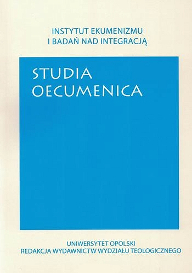
Celem niniejszego artykułu jest próba „teologicznej i duchowej lektury” świętych tekstów dwóch wielkich światowych religii, czyli chrześcijaństwa i buddyzmu. W przypadku buddyzmu nasze analizy skupią się na wybranych fragmentach kanonicznego zbioru tekstów buddyzmu theravāda, czyli Tipiṭaka. Będą to: Lokāyatika Sutta (SN 12.48), Dutiyaavijjāpahānasutta Sutta (SN 35,80) oraz Avijjā Sutta (SN 45.1). Jeżeli chodzi o chrześcijaństwo, to skoncentrujemy się na sześciu nowotestamentalnych perykopach, w których pojawia się rzeczownik a;gnoia (Dz 3,17; 17,30; Ef 4,18; 1 P 1,14) lub avgnwsi,a (1 Kor 15,34; 1 P 2,15). Po przeprowadzeniu badań o charakterze egzegetycznym przejdziemy do analizy teologiczno-komparatywnej. Innymi słowy, staramy się spojrzeć na buddyjską ideę niewiedzy (avijjā) z perspektywy teologii chrześcijańskiej. Stawiamy tezę, że pomiędzy pojęciem niewiedzy w buddyzmie theravāda a literaturze nowotestamentalnej nie ma pełnej symetrii co do ich miejsca w ramach całego systemu filozoficzno-teologicznego danej religii. W buddyzmie niewiedza (avijjā) jest elementem fundamentalnym dla charakterystyki kondycji człowieka. Z kolei w Nowym Testamencie ten sposób opisywania nieznajomości jedynego Boga i Chrystusa nie pełni centralnej funkcji, ale ma jedynie charakter drugorzędny i uzupełniający. Gdybyśmy chcieli w chrześcijaństwie znaleźć bardziej adekwatną analogię z ideą niewiedzy w buddyzmie theravāda, będzie to doktryna o grzechu pierworodnym.
More...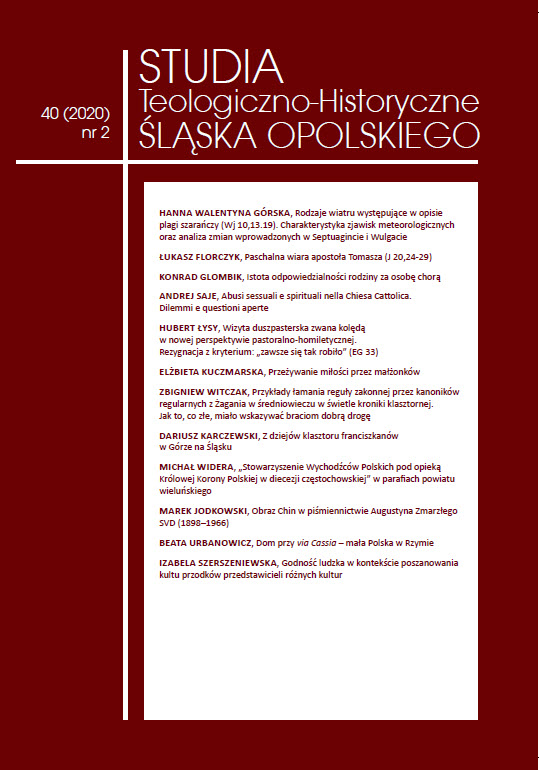
Przedmiotem artykułu są dwa rodzaje wiatru występujące w opisie plagi szarańczy: wiatr wschodni oraz zachodni, oraz wpływ tych zjawisk meteorologicznych na rozumienie tekstu Wj 10,13.19. Tekst przedstawia cechy charakterystyczne wiatru wschodniego i zachodniego na terenie Palestyny i Egiptu, czyli miejsc, w którym zostały osadzone wydarzenia. Ponadto zostały przedstawione różnice występujące między tekstem hebrajskim i Septuagintą, Vulgatą oraz tłumaczeniem polskim.
More...
Ewangelista Jan zaprezentował w swoim dziele różne wymiary wiary w zmartwychwstałego Jezusa. Umiłowany uczeń uwierzył po zobaczeniu pustego grobu, w którym pozostały tylko płótna i chusta (J 20,8). Maria Magdalena uwierzyła po tym, jak przemówił do niej uwielbiony Chrystus, którego wcześniej pomyliła z ogrodnikiem (J 20,14-16). Uczniowie uwierzyli wówczas, gdy ujrzeli swego zmartwychwstałego Mistrza i Jego rany (J 20,20). Tomasz wyzbył się swych wątpliwości i uwierzył pod wpływem spotkania z Jezusem, który pozwolił mu nie tylko oglądać, lecz również dotknąć swych rąk i boku (J 20,24-28). Wreszcie są też i tacy, którzy nie widzieli Jezusa i Jego spektakularnych znaków, a jednak w Niego uwierzyli (J 20,29). Niniejszy artykuł prezentuje szczegółową analizę perykopy J 20,24-29, w której jest mowa o spotkaniu zmartwychwstałego Chrystusa z Tomaszem. Był to przełomowy moment w życiu apostoła, który wiązał się z dwoma rodzajami przejścia: od wątpliwości do wiary dojrzałej oraz od warunków stawianych Jezusowi do mocnego wyznania wiary: „Pan mój i Bóg mój!”.
More...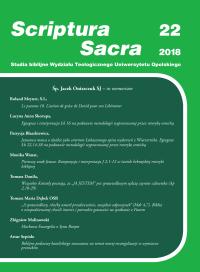
Przedmiotem artykułu jest egzegeza i interpretacja Łk 16 na podstawie metodologii wypracowanej przez retorykę semicką. Założony cel został osiągnięty. Przeprowadzone badania oraz ich wyniki opisano w 3 powiązanych ze sobą punktach. Pierwszy z nich został poświęcony kompozycji tekstu. Na ten etap pracy składała się: delimitacja, która pozwoliła wydzielić 16. rozdział Ewangelii wg św. Łukasza jako jedną jednostkę oraz nakreślić jej kontekst; możliwe stało się ukazanie, że w skład Łk 16 wchodzą 3 powiązane ze sobą fragmenty oraz ich szczegółowa segmentacja (ujęta w 2. podpunkcie). Ostatnim etapem było spojrzenie całościowe na badaną sekwencję, uzasadniające jej symetryczno-koncentryczną budowę. W drugim punkcie przeprowadzono analizę intertekstualną poszczególnych wyrażeń, istotnych dla interpretacji perykop wchodzących w skład sekwencji. Na tym etapie badań możliwe stało się dostrzeżenie powiązań pomiędzy jednostkami. To z kolei pozwoliło w trzecim punkcie opisać zależności i uzasadnić proponowaną wcześniej figurę kompozycyjną AXA’. Wypracowana interpretacja poszczególnych fragmentów stała się punktem wyjścia dla głębszej analizy, w której interpretacji poddano jednostki paralelne, co z kolei pozwoliło na wyciągnięcie wniosków teologicznych. Wykazano, że poznanie, w rozumieniu biblijnym, jest pierwszym etapem na drodze do pełnego zaangażowania. Tylko ten, kto prawdziwie doświadczył bliskości Jezusa, jest zdolny podjąć ryzyko, wykorzystując wszystkie możliwe środki, by pozyskać Królestwo Niebieskie. Może to uczynić jedynie, okazując miłosierdzie i czyniąc użytek z dóbr doczesnych. Niepodzielne serce oddane na służbę Bogu domaga się kreatywnej miłości bliźniego.
More...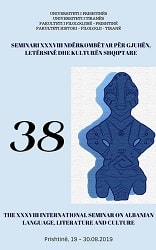
This paper aims at providing an overview of the oneiric discourse in fiction. The short story “How Ago Jakupi found God’s way” (Qysh e gjeti Ago Jakupirrugën e Zotit), from the author Mitrush Kuteli, shows us how dream works as a generator of fiction and its particularity. In the story about the old man that seeks God’s way, the oneiric sign which comes from “the other” world, puts into the function the coordinates of the subconscious and the divine. Entering into the dream world, which as a fictional text, is doubly fictional, and receiving divine signals or signals from the subconscious show or initiate the changing fate of the protagonist and the changing of the narrative course. The author incorporates the dream as a deux ex machine tactic, where do the narrative and philosophical worlds confront, synthesizing the two fundamental philosophical concepts of the human being: his inner voice and the relation to the supernatural. According to the symbolism of dreams and their interpretation, here, whether dreams represent the dialog with the subconscious or they refer to the divine revelation, as a supernatural approach, we will mostly rely on the biblical interpretation of dreams. By reading the language of dreams, interpreting their signs, symbols and their meanings, we intend to represent the space and function that oneiric discourse has in the literary work of MitrushKuteli, as an author of Albanian literary modernity.
More...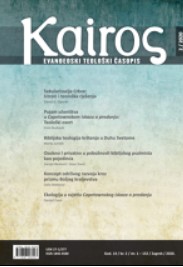
In searching for answers about the actual relation between two apparently incompatible concepts: the Kingdom of God and the Sustainable Development (SD), we will try to put them side by side and use respective comparative findings, in order to see if they can work together and possibly benefit from each other. The aim is to better understand future perspectives that are opening for the church within the contemporary context. The two concepts considered in this research, the Kingdom of God and SD, are never supposed to be separated. Although coming from different sources, using different languages, and springing out from different socio-political contexts, they tackle the same set of universal issues; both are eagerly anticipated, their fulfillment is of utmost importance, they both call for profound personal and communal transformation, both are powerfully creative and innovative, and both have the capacity to mobilize communities, peoples, and resources. The intersections between the SD and the Kingdom of God create opportunities for the church to practice shalom and to nurture hesed in the world by encouraging inclusiveness, lobbing for social justice, carrying for the poor and marginalized, and extending love and compassion onto the whole of creation, without losing its genuine identity. Within the SD framework, the role of the church is to make sure that nobody is left behind. The church might be the best part of the SD practice by persistently insisting on the same universal set of Kingdom values no matter how circumstances are changing.
More...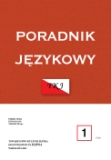
The contemporary translation strategies concerning equivalents of names from the field in translations of the New Testament actualise the conclusions drawn by researchers, who confront the nominations that are in use in the Polish language with their perceptions by those in question, that is black people. A response to a certain depreciation of the semantics of the lexemes Murzyn, Czarny (when used as nouns) is the selection of a safer strategy, which consists in transferring the adapted form from the source text (Etiop, Etiopczyk, Królowa etiopska, Niger).
More...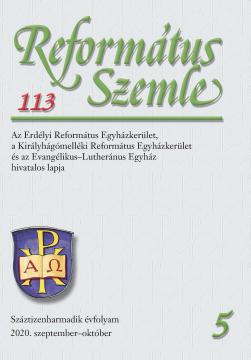
The present study examines from the perspective of dogmatics Eduard Böhl’s book entitled Christologie des Alten Testamentes oder Auslegung der wichtigsten Messianischen Weissagungen published in 1882. The study deals mainly with the introductory chapter. E. Böhl, professor of Reformed Systematic Theology at the Protestant Theological Faculty in Vienna from 1864 to 1899, was strongly influenced by the theological vision of H. F. Kohlbrugge (1803–1875), a Reformed pastor from Elberfeld, Germany. As a systematic theologian he followed the orthodox Reformed position which emphasised the inseparable unity of Scripture. From this hermeneutic stance he defended the Christology of the Old Testament. Böhl testified that God in Christ, in fact, repeated, confirmed, and accomplished on a higher level what had happened in the lives of Old Testament confessors. Old Testament writings legitimize Jesus’ coming, incarnation, salvation, suffering, death, and resurrection. The essence of Böhl’s standpoint is that some of the messianic texts do not refer directly to Christ, but above all to “types”, figures who carry the promise of salvation. Other parts, however, such as the psalms discussed in detail in his book, are unequivocal pieces of evidence of the promises of the Messiah who is embodied in Jesus Christ. In support of his view, he cited “the exegesis of the New Testament,” the apostles and evangelists, and the Targums, the Book of Enoch, and the Talmud among the Jewish religious literature. With his theological vision and writings, through his Hungarian disciples, Böhl exerted a decisive influence on the Reformed theological thinking and the New Orthodoxy in Hungary. This theological trend took up the fight against the spread of theological liberalism with its centre in Debrecen during the second half of the nineteenth century. Böhl, as a defender of traditional Calvinism, was a sure point of reference with respect to important theological issues.
More...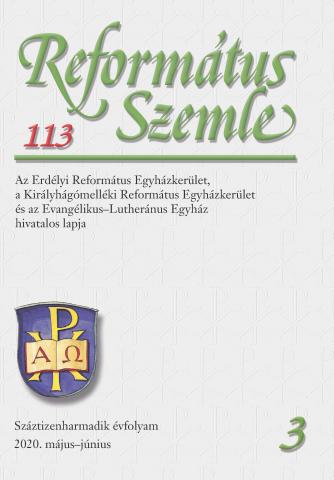
First and foremost, the Protestantism sought to incorporate the first three disciplines of the seven liberal arts into the methodologies of scholarly theology and the curricula of school education. It also served the purpose of preparing seminary students for preaching the Word in their mother-tongue. Once they mastered the languages of the Two Testaments, dialectics (or logic) aided them in decoding the meaning (or the message) of the passage, while rhetorics guided them in composing a structurally sound sermon. (This threefold unity is still applied today in Hungarian theological education, albeit under a different name.) Dialectics is the foundation for the study of all sciences. Indeed, the potential benefits of certain scientific disciplines cannot be fully achieved without a thorough understanding of its principles. Therefore, as religious sermons are modelled after secular rhetoric, their structural features cannot be correctly assembled without resorting to the laws of philosophical dialectics.
More...
Jelen dolgozat Jézus feltámadásának hagyományozását vizsgálja, mégpedig úgy, hogy először a feltámadás teológiai gondolatának a bibliai és kultúrtörténeti hátterét térképezi fel, majd a Jézus feltámadására vonatkozó újszövetségi bizonyságtételek mögötti hagyományokat igyekszik kitapintani, hogy majd az utolsó fejezetekben megkísérelje felvázolni a beazonosított tradícióelemek hagyományozási folyamatát az ősevangéliumtól a kanonikus evangéliumok feltámadástörténetéig.
More...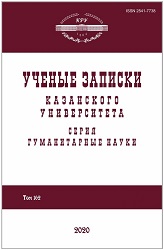
In this paper, the influence of panbabylonism theories on the historical research in Russia during the pre-revolutionary and early Soviet eras was studied. The criticism of panbabylonism was discussed; the theories of its supporters were considered. The critics of panbabylonism were theologians (V.P. Rybinsky, N.S. Arsenyev) and historians (B.A. Turaev, N.M. Nikolsky). The strategies of their criticism were different. Theologians, who criticized the Assyriological narrative, used outdated theological theories based on the thesis of consistency of the Bible and God’s intervention in its creation, which, against the background of criticism from scholars, looked conservative, inappropriate, and unproven. The supporters of panbabylonism especially vividly proved themselves in the 1920s. In this period, when the Marxist approach to assessing historical events was not formed in the Soviet historiography, panbabylonism was used mainly to build a narrative that discredited religion and corresponded to the atheistic discourse of the Soviet government of that time. It was concluded that panbabylonism was not initially accepted by Russian historians, but was revived in the 1920s, when it could match the goals of the Soviet government. Subsequently, the scholars accepted and developed many of the concepts of panbabylonism, such as initial polytheism of all Semitic tribes, borrowing of Babylonian cultural concepts by Israel and their indirect influence on Christianity; assyriologists began to research the development of babylonian mathematics and astronomy.
More...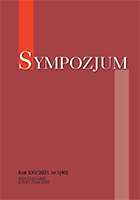
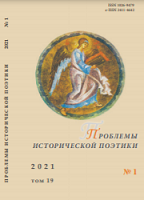
The article analyzes the semantic functions of the Old Testament and New Testament texts in the story Polosa (Stripe), a landmark for the literature of the final stage of Russian classical realism, written by Lydia Nelidova, whose work has not yet been the subject of special study. The relevance of the research is defined by the rather high role of Nelidova’s creative activity in the literary process of the last decades of the 19th century. Biblical references, quotations, reminiscences, allusions and paraphrases, which determine the sequence of the text that creates the semantic field of the work, perform the dominant ideological and aesthetic function in creating the story as a “non-trivial new text.” Nelidova’s innovation is based on the active use of Dostoevsky’s literary traditions (orientation toward the idea of “finding a person in a person” and the “living life” constant). As a “semantic whole,” Nelidova’s story is organized by the internal dialogue of three concepts of “life.” One of them is based on the Christian teaching, the other on an appeal to science, and the third - on the idea of life as an all-dominating objective force. The author’s moral and aesthetic position, which confirms the biblical concept of life, is objectified in the logic of semantic actualization of the gospel truths associated with the interpretations of the eternal theme of the struggle between good and evil, ways of human salvation, overcoming the sin of thoughts, pride and selfishness. The artistic historicism of the story, manifested in the coverage of the social contradictions of the post-reform Russia, sanctions the author’s intentionality associated with the assertion of universal human spiritual, moral and humanistic ideals. Formation of meaning at the level of the author’s intentionality and at the level of meaning generation is carried out by activating the intertextual, hypertextual and contextual functionality of biblical pretexts and traditions of Orthodox Christian culture. It is implemented in the process of illuminating conflicts of time and characters’ psychological disclosure. Intertextual reminiscences and quotes from biblical texts, the works of Christian ascetic writers and patristic sources aim to form the semantic core of the main character’s narrative and implement the principle of intersemantization of meanings enshrined in sacred texts. Thanks to these texts, they manifest in the thoughts of a character seeking a way out of spiritual and moral impasse. The author’s artistic experience stimulated the formation of the Dostoevsky school in the literature of the last decades of the 19th century. The author’s quote-based thinking anticipates the narrative strategies that will become characteristic of the artistic discourse of subsequent historical and literary eras.
More...
The article offers an interpretation of Innokenty Annensky’s poem Magdalene written in 1885, but published only in 1997. This early work of the poet differs significantly from his poetry, known from published collections (Quiet Songs and Cypress Box), which are not characterized by an appeal to biblical images and motifs. In the poem Magdalene Annensky offers his interpretation of the Gospel story, depicting the conflict and struggle between human feelings (Mary Magdalene) and divine vocation (Jesus) in the dialogues between Magdalene and Jesus. Analysis of the structure of the poem allows us to determine the presence of three literary traditions in it: 1) ancient Greek tragedy and the chorus as one of its main actors; 2) a romantic poem about unrequited love (first of all, The Demon by Mikhail Lermontov) and the concept of romantic duality; 3) Faust by Johann Wolfgang Goethe. The combination of antique concepts (fate, destiny, metamorphosis) with the ideas of Christianity, as well as allusions to the works of Russian romantics, allowed the author to combine three aspects in the image of Mary Magdalene: ancient fate (destiny), Christian (Orthodox) holiness and romantic alienation from the world. The combination of these three aspects in the poem by I. Annensky forms a new quality: the romantic poem did not provide for the chorus as a character, and the ancient Greek tragedy did not allow for such lyrical digressions typical for a romantic poem. The Gospel text in the poem by I. Annensky is transformed in line with the three mentioned traditions, and thus the theme “grows” into a dramatic poem.
More...